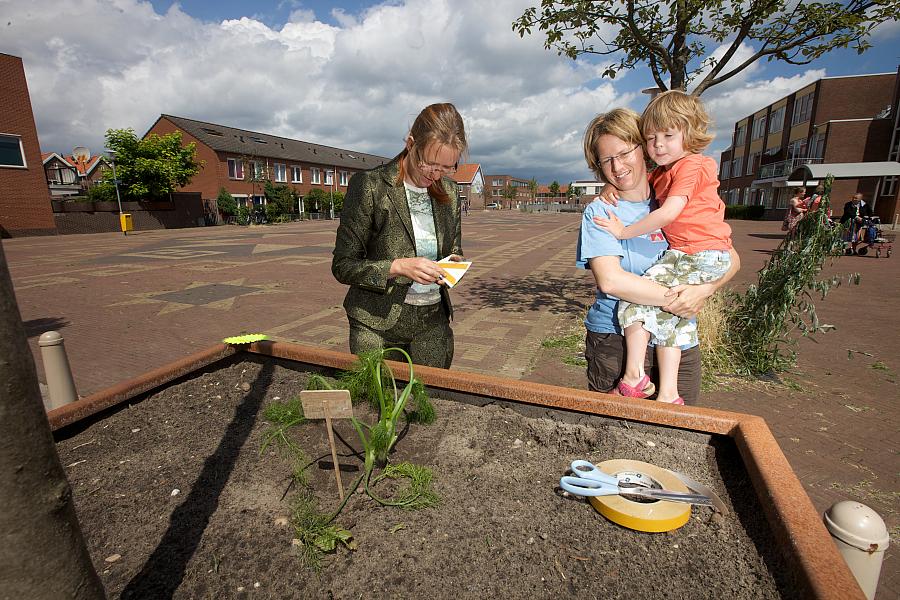Balanced Diet: What food warriors can learn from tobacco victories

"Guerrilla gardening" takes advantage of unusual spaces.
What we eat and what we don’t eat can have just as profound an impact on our health as whether we smoke, even though smoking is still considered by most to be a far more severe health threat.
At the EAT Stockholm Food Forum, food was definitely talked about as the next tobacco, but with many notable differences that make it much more complicated for health policy strategists. As Norwegian parliamentarian Jonas Gahr Støre put it:
Tobacco was easy in a way in terms of politics. There is no positive effect from the product. Whereas with food we’re talking about composition and portions. When you brought the evidence about tobacco to the finance ministers, it mattered to them. Stopping people from smoking would improve the budget and they could spend money on something else. But with food it’s more difficult to explain what to do.
And yet many at the forum tried.
Taxes were, of course, a big part of the discussion. Repeated studies have shown that increasing taxes on cigarettes reduces smoking. In countries around the world where taxes have gone up, smoking has declined. And when taxes have been cut on cigarettes, smoking has gone up.
Benjamin Ebeling, a medical student from Copenhagen, and others suggested that fat taxes be levied the same way cigarette taxes are. And, on the flip side, Ebeling and others suggested that fruits and vegetables be subsidized or, in the countries where they are, that additional subsidies be added. The result would be that a snack bag of Doritos, for example, would cost more than an orange. Just to be clear, groups like the Center for Science in the Public Interest have shown that healthy foods already are a good, affordable option. Here’s Margo G. Wootan, director of nutrition policy at the center:
The notion that healthy fruits and vegetables are expensive and that packaged snacks are cheaper is an urban myth that deserves to be put out to pasture once and for all. Very few Americans are actually eating recommended amounts of fruits and vegetables — and most of us would do well to consume fewer packaged convenience foods and snacks, which are often higher in calories, salt, and sugars.
Taxes would just make the choice even easier and, as many speakers asserted, they also could encourage food companies to make healthier products in the first place.
Perhaps even more interesting was the discussion of how communities can help break habits. Former President Bill Clinton spoke about why people choose bad food. Just as smokers take their cues from fellow smokers, people eat what their families and friends are eating.
“When people are uncertain, the tendency is to want to draw the circle around yourself tighter and hang with your own crowd,” Clinton said.
So the trick is to change a community’s collective habit. One big idea that energized the crowd came from Ron Finley, a Los Angeles clothing designer who has become a champion for what he calls “guerilla gardening.” Fed up with strips of grass between sidewalks and streets in South Central Los Angeles turning into weed patches or dumping grounds for garbage, he started planting vegetables in such places in 2010. Steve Lopez wrote a column about his efforts in the Los Angeles Times:
The sprouting began in late December, and it didn't stop. By early spring, the bounty was stalling traffic, with rubber-neckers taking in the eruptions of tomatoes, peppers, chard, melons, squash, pumpkins, onions, broccoli, eggplant, celery, kale and herbs. Some passersby helped themselves, others asked. Conversations began, friendships formed.
Finley urged everyone at the EAT Stockholm Food Forum to leave the hotel where the conference was taking place, pick up some gardening tools and start planting in the streets of Stockholm.
"To change the community, you have to change the composition of the soil,” Finley said.
It was clear that the battle to make food healthier and to help people make healthier diet choices won’t be nearly as straightforward as the battle to stop people from smoking tobacco. But that battle was far from easy. And there would have been few people in 1964, when the U.S. Surgeon General issued a landmark report on smoking, who would have predicted that smoking rates in the U.S. would eventually plummet to the point where the rates in some counties are now less than 10% of the population.
Photo by Sebastiaan ter Burg via Flickr.

